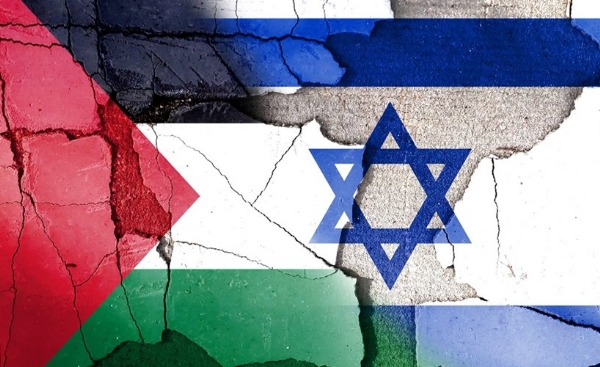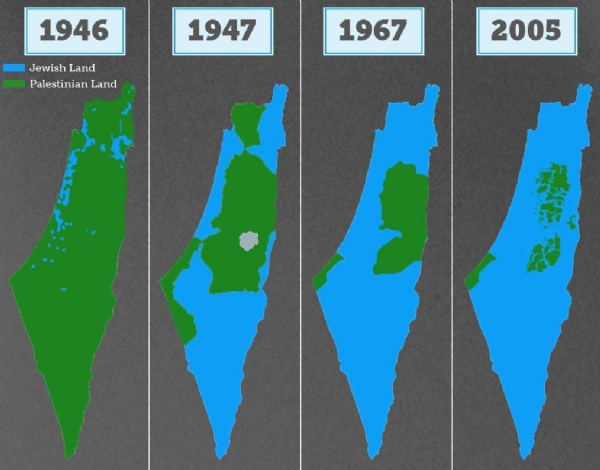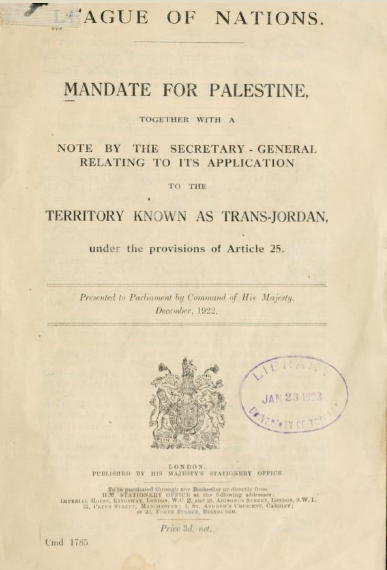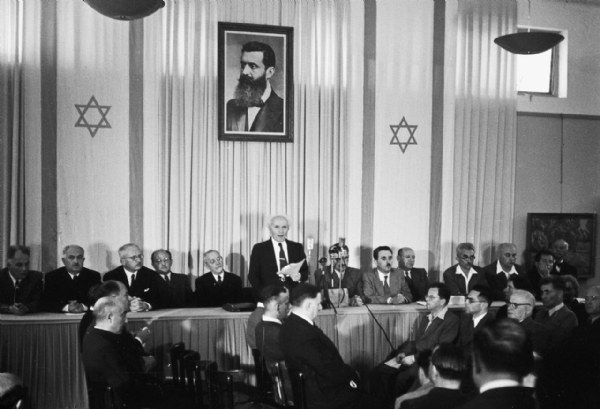Understanding the Israel-Palestine Conflict : A Historical Perspective
07 Oct 2023 16:32:12
Recent developments in the Israel-Palestine conflict have once again brought this long-standing and complex issue to the forefront. Israel has announced a "state of war" following a rocket attack by the Hamas terrorists from the blockaded Gaza strip. Hamas militants in Palestine claimed that this was only their 'first strike'.

According to the reports, more than 5,000 rockets were launched towards Israel on a festive holiday morning as loud sirens blared across the country. The Israeli defense forces have also raised concerns about an alleged infiltration by Hamas terrorists.
In the heart of the Middle East, a conflict of profound historical and geopolitical significance continues to make headlines and elude resolution. The Israel-Palestine conflict, marked by decades of strife, complex narratives, and competing claims, remains one of the world’s most intractable disputes. Let’s embark on a journey through history to understand its roots and ongoing challenges.
A Historical Mosaic
The canvas upon which this conflict unfolds was once part of the Ottoman Empire and later, the British Empire’s purview in the early 20th century. Palestinian Arabs and Jews, both with deep historical ties to the land, staked their claims, igniting a contentious struggle over territory and control.
Palestinian Aspirations
For Palestinian Arabs, this land represents the cradle of their national identity. Their aspirations are centered around the establishment of a sovereign state, Palestine. The core issue at the heart of the conflict is determining who rightfully possesses and governs this piece of earth

Jewish Quest for Homeland
Conversely, Jews fleeing persecution in Europe in the 20th century sought to establish a homeland in the land they consider their ancient birthright. However, their vision clashed with the historical presence and claims of Arab inhabitants, then known as Palestine.
Balfour Declaration (1917)
The United Kingdom, which assumed control of Palestine post-World War I, declared its support for a “national home for the Jewish people” through the Balfour Declaration. This declaration fanned the flames of tension, leading to violent confrontations between Arab and Jewish communities.

Emigration and Strife
The 1920s and 1930s witnessed significant Jewish emigration to Palestine, intensifying the friction with Palestinian Arabs. As tensions escalated, demands to halt Jewish immigration by Palestinian Arabs fell on deaf ears, culminating in tragic violence that claimed hundreds of lives.
British Mandate (1923)
The British Mandate for Palestine, conferred by the League of Nations, charged the UK with the responsibility of creating a Jewish national homeland in the region.

Peel Commission’s Partition Proposal (1936)
Following years of violence between Jews and Arabs, the Peel Commission, appointed by the UK government, recommended partitioning Palestine into separate Jewish and Arab states, but this plan was not realized.
UN Partition Plan (1947)
The United Kingdom turned to the United Nations in 1947, leading to the UN’s partition plan. It offered two proposals: one for separate states with economic ties and another for a single binational state with autonomous Jewish and Palestinian regions. The plan was divisive, with the Arab nations rejecting it.
Birth of Israel (1948)
In May 1948, Israel declared independence, prompting neighboring Arab nations — Lebanon, Syria, Iraq, and Egypt — to immediately invade the newly-established state. This conflict redrew territorial lines in the region.

- The Two-State Solution
The two-state solution, envisioned as separate entities for Israelis and Palestinians, faces significant obstacles:
1. Borders
: Disagreements persist over border delineation, especially concerning pre-1967 lines and Israeli settlements in the West Bank.
2. Jerusalem
: The status of Jerusalem, claimed as the capital by both sides, poses a complex challenge.
3. Refugees
: The issue of Palestinian refugees and their descendants seeking the right to return challenges Israel’s demographic equilibrium.
4. Security
: Israel’s security concerns, including threats from groups like Hamas, complicate negotiations.
Complex Representatives
Another layer of complexity is the division of power between the Palestinian Authority (PA) in the West Bank and Hamas in Gaza, making negotiations even more intricate.
Why the Two-State Solution is Essential
Besides fulfilling the basic desire of both Jews and Arabs for their own states, supporters of the two-state solution argue that alternatives are simply unworkable.
1. A Single State
: Merging Israel, West Bank, and Gaza into a single state would relegate Jews to a minority, leading to discontent among both communities. Hamas controls Gaza, but legitimizing a designated terrorist organization as a state is unfeasible.
2. Moral Reasoning: Advocates for a two-state solution emphasize the moral imperative of respecting each group’s aspirations. It’s a struggle for collective rights between two distinct groups, and subordinating one’s aspirations to another’s vision is problematic.
Current Developments
The Israel-Palestine conflict has returned to the forefront of global attention due to recent escalations. The Islamist terrorist organization, Hamas, launched multiple rockets from Gaza, resulting in the loss of many Israeli lives. In response, Israel Defense Forces (IDF) declared a state of war alert.
Conclusion
The Israel-Palestine conflict is a tapestry woven with the threads of history, identity, and territorial disputes. Its resolution remains elusive, as both sides grapple with aspirations, grievances, and deeply rooted narratives. Achieving lasting peace in this troubled region demands diplomacy, empathy, and compromise.
